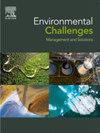Assessing Geological and Seismic Hazards of Malili-Matano Region, East Luwu Regency, Sulawesi: A preliminary study for CCS and Strategic Infrastructure Planning
Q2 Environmental Science
引用次数: 0
Abstract
Understanding the seismotectonic characteristics and seismic hazards of the Malili-Matano Region (MMR) in Sulawesi is crucial due to its proximity to active faults, including the Matano Fault Zone (MFZ) and surrounding fault systems. These geological conditions pose significant risks to infrastructure development, particularly Carbon Capture and Storage (CCS) facilities, which require a thorough assessment of seismic hazards. This study integrates seismotectonic mapping and Probabilistic Seismic Hazard Analysis (PSHA) to evaluate earthquake risks, with a particular focus on spectral acceleration (PSA) values that influence structural resilience.
The results indicate that MMR exhibits complex fault interactions, leading to elevated Peak Ground Acceleration (PGA) and Spectral Acceleration (PSA) values, with PSA Ss = 1.10 g at 0.2 s and S1 = 0.55 g at 1 s for Site Class SB under a 2 % probability of exceedance in 50 years (2500-year return period). These seismic hazard estimates suggest that structural design in the region must adhere to Seismic Design Category D standards, including reinforced foundations and real-time ground motion monitoring to enhance CCS infrastructure safety. The study underscores the importance of continuous seismic monitoring, hazard mitigation strategies, and risk communication for infrastructure resilience in seismically active environments. The findings contribute to a refined understanding of seismotectonic behavior in MMR and its implications for CCS site selection and long-term sustainability.
苏拉威西岛东卢武县Malili-Matano地区地质和地震灾害评估:CCS和战略基础设施规划的初步研究
了解苏拉威西岛马里利-马塔诺地区(MMR)的地震构造特征和地震危险性至关重要,因为该地区靠近活动断层,包括马塔诺断裂带(MFZ)及其周围的断层系统。这些地质条件对基础设施的发展构成了重大风险,特别是碳捕获与封存(CCS)设施,这需要对地震危害进行彻底的评估。本研究整合了地震构造制图和概率地震危害分析(PSHA)来评估地震风险,特别关注影响结构弹性的频谱加速度(PSA)值。结果表明,MMR表现出复杂的断层相互作用,导致峰值地面加速度(PGA)和频谱加速度(PSA)值升高,在50年(2500年回归期)超过的概率为2%的情况下,SB类站点在0.2 s时的PSA s = 1.10 g,在1 s时的S1 = 0.55 g。这些地震危险估计表明,该地区的结构设计必须遵守地震设计D类标准,包括加固基础和实时地面运动监测,以提高CCS基础设施的安全性。该研究强调了持续地震监测、减灾战略和风险沟通对地震活跃环境中基础设施恢复能力的重要性。这些发现有助于更好地理解MMR的地震构造行为及其对CCS选址和长期可持续性的影响。
本文章由计算机程序翻译,如有差异,请以英文原文为准。
求助全文
约1分钟内获得全文
求助全文
来源期刊

Environmental Challenges
Environmental Science-Environmental Engineering
CiteScore
8.00
自引率
0.00%
发文量
249
审稿时长
8 weeks
 求助内容:
求助内容: 应助结果提醒方式:
应助结果提醒方式:


